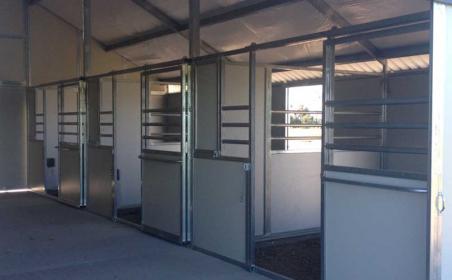Depending on what kind of horses you have, my vote would be for a mix of solid walls and walls with bars/mesh above a certain height. The proportion would be determined by what type of horses you have and how much turnover you have.
Horses are indeed herd animals, but they also are very specific in their relationships. A horse that might really enjoy turnout with his little herd of friends might be stressed out next to a dominant mare who is constantly giving him the evil eye. A sensitive mare might feel persecuted after spending the night next to a studdish gelding that has been leering at her. Even well-behaved horses sometimes don’t like each other that much. Of course, you can always shuffle stalls around to accommodate preferences. But, IMO, a horse that has a healthy herd situation for part of each day really doesn’t NEED interaction with other horses when in the barn.
We also ask horses to tolerate separating from their buddies all the time, so it is perfectly healthy for them to practice being separated from them when they are in the barn. However, adjoining stalls are really nice if you have young horses or do layups. In those cases, the company of a steady friend through some bars might be a real blessing.
Either way, I’d advise against yokes in the aisle doors or European stall fronts. It’s a nice “look” but most horses use the access to harass horses walking up and down the aisle, to try to grab stuff that is within reach to ruin, to try to scrape the stall front with their teeth, or crib on the edge the yoke provides. If you have visitors/guests, it’s a temptation for them to pet or fool with horses that aren’t theirs.
I also am against windows where the horse can stick their head out. From a maintenance standpoint it’s a nightmare–horses destroy those edges with the determination of beavers on cocaine. Also, if you have horses long enough, sooner or later you will encounter one or two with poor judgement who will try to escape out a window/dutch door. It doesn’t happen often, but when it does it’s not pretty.
If you want a barn to look nice, build it with as few chewable/biteable edges as possible.


